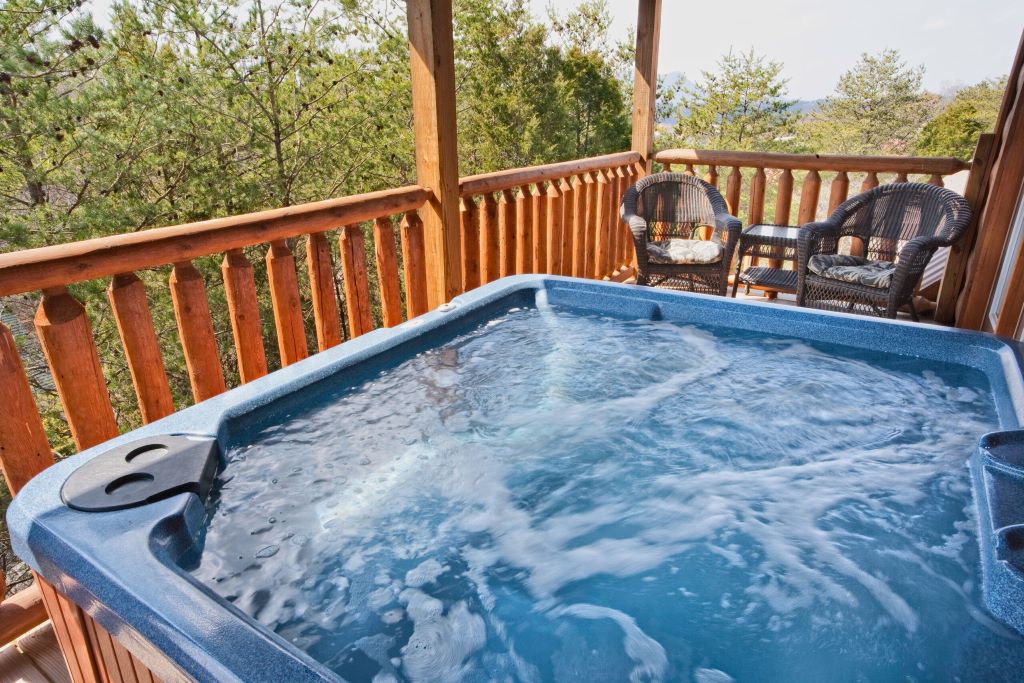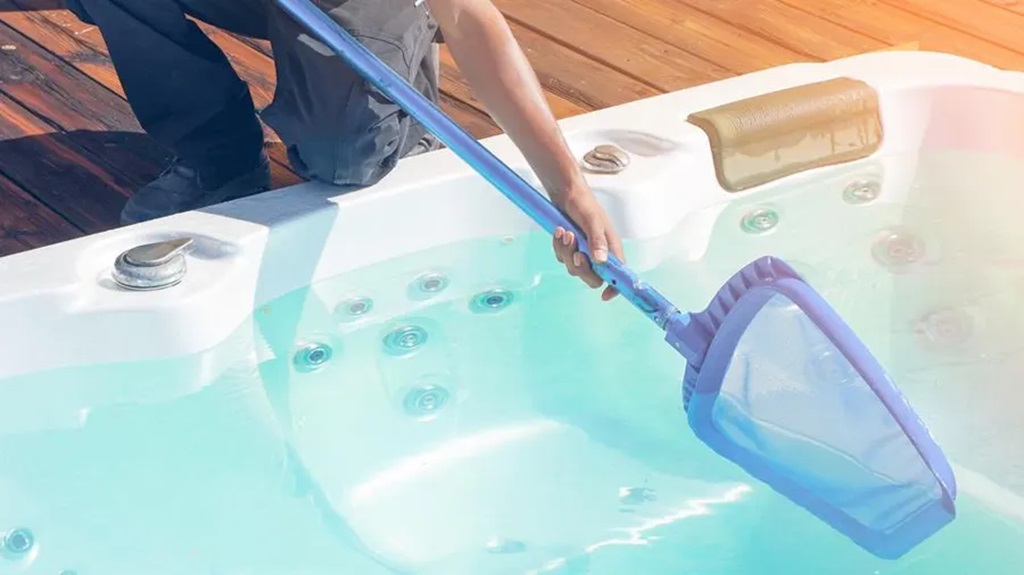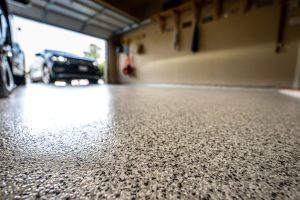How to Drain a Hot Tub
As relaxing and fun as having your hot tub can be, there eventually comes a point when you’ve got to drain the thing and start over with fresh water. I know, I know, it’s a bummer. Draining and refilling a hot tub is kind of a pain, I get it. But just like changing the oil in your car, it’s got to be done every once in a while to keep things running smoothly (not to mention hygienically). I’ll walk you through the whole process, from figuring out when it’s time to drain it to getting your hot tub filled back up and perfect again. Equipped with the right info, you can drain and refill that baby yourself and save some cash instead of hiring someone to do it. This is valuable stuff, people! Alright, grab your swimsuit, and let’s get into how to drain a hot tub.
Why Drain Your Hot Tub in the First Place?
Before we dive into the nitty-gritty of how to drain your hot tub, let’s back up a sec and talk about why draining and refilling is important in the first place.
Cleaning Out Gunk and Biofilm
Over time, hot tubs can accumulate dirt, oils, cosmetics, and other gunk. This stuff interacts with the chemicals and water to form a gross filmy substance called biofilm on the walls of your hot tub. Draining it allows you to scrub away this nastiness and start fresh. No one wants to marinate in old biofilm!
Resetting Chemical Levels
The longer water sits in your hot tub, the more likely the chemical composition will be off-balance. Draining and refilling is an opportunity to get your chemicals back in check so the water is safe and ready to relax in. Nobody wants to soak in water that smells funky or could make you sick!
Improving Filter Efficiency
As your filter gets more clogged up with particulate, it operates less efficiently. Draining allows you to not only clean the filter but also remove some of the gunk that’s built up in your hot tub plumbing system. Starting the tub with fresh water gives your filter cleaner water that’s easier to filter.
Ensuring Safe Water
Stagnant water can actually be dangerous, allowing microbial growth, including dangerous bacteria and fungi. Draining and replacing all the water ensures you have a clean slate free of risky contaminants. When we’re talking about water, you soak your body in, better safe than sorry!
Before You Drain: Safety First!
I know you’re excited to empty this thing out and scrub away the grime. But patience, my friend! First things first, we gotta talk safety. Draining a hot tub improperly can actually cause damage or dangerous conditions. Let’s cover some key tips for staying safe throughout the process:
Turn Off Power to the Tub
Before draining, be sure to flip the circuit breaker off that controls power to your hot tub. Safety first! You don’t want any accidents with water and electricity mixing. I know from experience—got zapped once and let me tell you, it’s like getting punched by lightning! Not fun…
Check the Owner’s Manual
Before doing anything else, consult your hot tub owner’s manual on specific draining procedures recommended for your make and model. Following their guidelines is always wise. Your manual may have certain precautions related to drain connections, valves, filters, or cold weather draining you need to know about.
Have Help Moving the Cover
If your tub has a rigid cover, don’t try to move it by yourself—get a friend to help lift. That thing is heavy, and the last thing you need is to throw out your back trying to be a hero moving it solo! Save your strength for the draining.
Gather Proper Tools & Supplies
Make sure you have what you’ll need before getting started—basic hand tools, cleaners, algaecide, fresh filters if needed, a submersible pump if your drain hose doesn’t flow downhill, and anything else suggested in your owner’s manual. Nothing worse than realizing mid-drain you’re missing a key item! Prepare the night before if needed.
Check the Weather Forecast
If freezing temps are expected, you’ll want to delay draining. If you absolutely must drain when it’s cold out, discuss special precautions with your hot tub dealer. Freezing water left in pipes/hoses can cause serious damage. Don’t let Ol’ Man Winter ruin your hot tub!
Ok, let’s get down to business!
Locating the Drain and Removing the Cover
Alright, let’s start by tracking down where that water is going to escape from. Most hot tubs have a drain valve (also called a drain cock…insert lame joke here) down at the base somewhere. Consult your owner’s manual for the exact location and what it looks like.
Often, it’ll be a garden hose style threaded valve near the footwell. You connect a standard garden hose to it in order to drain out the old water. Some models hide it discretely underneath a removable cabinet panel. Just be careful removing any panels—don’t want to crack something!
Once you spot your drain valve, go ahead and remove your hot tub cover completely and set it carefully aside somewhere clean and dry. Be smart and get someone to help you here. No thrown out backs!
Next, start removing any removable filter cartridges too so gunk doesn’t wind up all over them during draining. Put them somewhere they’ll stay clean until you need to replace them later.
Three Hot Tub Draining Methods
Now that you’ve located your drain and removed the cover, you’re ready to unleash the flow! You’ve basically got three options when it comes to getting the water out of there. Let’s break ‘em down:
1. Drain Hose Running Downhill
The easiest method is if your valve connects to a standard garden hose allowing the water to gravity drain downhill away from the tub. Simply:
- Connect hose & point towards drain area
- Twist drain valve open
- Let her rip!
Gravity does the work as the water travels downhill through your hose. Just make sure to direct the end of the hose away from anything that could be damaged by the waterfall coming out. And unless you want to make a Slip ‘N Slide, avoid draining onto a paved or concrete area. The algae and other gunk left behind = slimy slip hazard!
2. Using a Submersible Sump Pump
If your drain setup doesn’t allow for water to flow downhill (say your tub is up on a balcony), you’ll likely need a submersible sump pump to assist drainage by pumping the water out. These handy little pumps are made to operate underwater.
To use one for draining:
- Set pump in tub & run the discharge hose downhill.
- Open drain to allow sump pump to start removing water. Monitor it to make sure pump doesn’t run dry!
The pump will shoot water through the hose instead of relying on gravity alone. This method obviously requires purchasing or renting a submersible sump pump, so anticipate that extra gear/cost if needed.
3. Bail Bucket Brigade
If all else fails and you find yourself without a downhill direction or a pump to help out, you gotta go old school. Grab some buckets and start bailing! Dip buckets in, haul them out full of water, dump downhill away from the tub, rinse and repeat.
It’s more backbreaking labor than fun water balloon fights, but it gets the job done. Just hope you don’t have one of those mega-sized hot tubs or your biceps will be burning before you know it! If going this route, consider having one strong friend bail while a couple others keep supplying the emptier buckets. Assembly line style.
While Draining: Remove Jets & Clean Plumbing
Here’s where the magic happens! As hot dirty water starts pouring out, transforming into a little river snaking down your yard, take advantage of the open access to remove and thoroughly clean the jets and plumbing lines while you can.
Removing & Cleaning Jets
Most hot tub jets simply unscrew, allowing you to remove them during draining fully. As you drain, unscrew each jet, spray any grit out with a hose or faucet sprayer attachment, then use a bottle brush and jet-specific cleaners to scrub out any lingering gunky buildup on the internal pieces & holes.
Make sure to dig out any debris clogging intake holes too. Rinse thoroughly before re-installing each jet once cleaning is complete. Be sure to keep track of which jet goes where for easy reassembly! Nothing worse than playing connect-the-dots trying to figure out later.
Clean visible plumbing lines
While accessible, spray out all visible plumbing lines leading to/from jets as well as pipe inlets along the bottom to dislodge debris. After draining the main tub, use a wet/dry vac to suck any puddles and schmutz out of the footwell and seating areas, too, if needed. Removing all this residue keeps it from messing with your clean water once refilled.
Clean Thoroughly While It’s Empty
Hooray, the dirty water is history down the drain! Now it’s time to get scrubbing. Resist the urge just to start refilling water right away. Taking advantage of the empty state to thoroughly clean all surfaces is hugely important for a few reasons:
Remove Biofilm & Residue
Like I mentioned earlier, there is likely a slimy film of biofilm that has been building up on all wet surfaces. It’s full of microbes and organic contaminants that you definitely don’t want mixing into your clean water once you refill.
Use a hot tub surface cleaner to degrease and degunk all the walls, seating areas, components, and plumbing lines you can access. Wipe it all down, getting rid of chemical residue buildup too. Make it shine!
You spent all that effort draining—don’t put dirty biofilm-infested water right back in there! Scrub it sparkling clean first.
Check for Damage
It’s much easier to inspect all components, jets, seals, hoses and surfaces when empty to spot any damage that may be accumulating. Better to find leaks, cracks or failing parts now before they become bigger issues down the road once everything’s refilled and obscured by water again.
Remove Hard Water Scale
In areas with hard water, the mineral scale can form crusty deposits inside the plumbing lines, jet assemblies and elsewhere. Take time while drained to dissolve and scrub away as much of these crusty mineral deposits as possible so they don’t keep growing once you refill the water.
Use a calc/scale cleaner for the best dissolving and removal results. The less leftover scale in there when you refill, the slower the new scale will accumulate.
Refilling Your Freshly Clean Hot Tub
Hallelujah, squeaky clean hot tub! Now comes my favorite part…DUMPING WATER BACK IN! It may not be as exciting as draining it out, but it is still very satisfying to see it returned to its former water-filled glory.
Follow the guidance in your owner’s manual for proper refill procedures. A few tips:
Refill Slowly
First, start slowly with the hose or whatever water source you use—don’t just dump a firehouse spray in there! Gradually adding water gives air bubbles a chance to make their way out instead of getting trapped. Trapped air can later cause problems with pumps working properly when circulation starts up. Be patient and let it fill lowly. I like to throw on some music and kick back in a lawn chair while keeping an eye on the rising water level.
Check New Water Quality
If your water source is well water or another non-municipal supply, it’s wise to have it tested before refilling the tub. You want to start with clean tub water with the cleanest water possible. Cloudy, bacteria-laden well water kinda defeats the whole purpose!
Use Filter Media If Needed
Some people recommend filling through filter media placed inside a sock/bag for extra sediment removal right off the bat. This likely isn’t necessary for most municipal water sources, but if your supply water tends to be dirtier or cloudier, it can help trap some particulates.
Look For Leaks
As water starts accumulating, carefully inspect all recently cleaned or removed components, jets, plumbing lines and seals for any leaks or dripping. Better to immediately spot and fix leaks now vs. after you’ve already filled up the tub!
Balancing Your Hot Tub Water
Alright, y’all, the tub is drained, scrubbed, and refilled. Lookin’ spick and span! But wait, we’re not done quite yet. Before getting soaked again, it’s really important to balance and sanitize the water by getting the chemical composition adjusted properly.
Start the Circulation Pump
First, fire up your hot tub’s circulation pump and let it run for a while, mixing up the newly filled water. This blends everything evenly, so you’re testing and adjusting uniform water instead of layers of uneven temps and chemistry. Let her rip for a few hours!
Test & Balance Chemical Levels
Using test strips and/or a digital tester, check pH, total alkalinity, and calcium hardness and start making any adjustments needed to reach ideal levels. Your owner’s manual and chemical brand instructions will have target numbers to aim for. It usually takes some gradual small dosing and retesting to dial in proper water balance.
Key things to measure and adjust:
- pH (acid/base scale)
- Total Alkalinity (buffers pH changes)
- Calcium Hardness (mineral content)
- Sanitizer Level (chlorine/bromine/etc to kill germs)
Getting all these correctly balanced ensures safe sanitary water and optimal tub performance. Take your time here and get it right!
Shock Dose Disinfectant
Once your base measurements reach proper parameters, give the tub a healthy shock dose of chlorine or other oxidizing disinfectant. This blast of sanitizer will kill any lingering bacteria and other microscopic boogeymen that might still be lurking in there.
Let the shock work its magic for 6-12 hours before using your hot tub again. Nobody likes accidentally getting blasted in the face with concentrated chlorine wafting up from the jets!
Ongoing Hot Tub Maintenance
Woo hoo, crystal clear sanitized water awaits! Now let’s chat real quick about keeping your hot tub happily humming along in the future with some basic maintenance. Here’s what you need to stay on top of:
Regular Shock Treatment
About once a week, give your hot tub a good shock treatment with either chlorine or non-chlorine shock. This maintains proper sanitizer levels to keep that water safe from ickies growing.
Change Filters
Replace filter cartridges about once a month or as needed based on your usage and local water quality. Clean filters mean clean water!
Drain & Clean
Even with good shock and filter habits, you should still plan to drain, clean and refill your hot tub every 3-6 months. Draining gives you a chance to fully clean out all residue so nothing funky accumulates long term.
Monitor Water Chemistry
Use test strips or digital readers to monitor pH, alkalinity, hardness and sanitizer levels weekly. This allows you to catch chemical deviations early and adjust to keep that water balanced! Problems multiply fast when chemistry gets wacky.
Deep Clean Surfaces
Every 6 months or so (when refilling after draining), give all the shell surfaces, jets, plumbing components and lines a thorough deep clean/degrease treatment to prevent scale, oils and general gunkiness from taking over. Keep her shining inside!
Ok my soaking friends, that covers it from start to sloshy finish! Go relax and unwind in your nice fresh hot tub. But don’t forget about me when it comes time to clean and fill ‘er up again!
FAQs
What’s the quickest way to drain a hot tub?
The fastest draining method uses a submersible sump pump, which can rapidly pump water out through a discharge hose downhill. This avoids slower gravity draining or manual bailing.
How often should you drain and refill a hot tub?
Industry standards recommend fully draining, cleaning and refilling your hot tub every 3-6 months depending on usage and bather load. This prevents contaminant, chemical and residue buildup.
What should you do before refilling a freshly drained hot tub?
Before refilling with fresh water, thoroughly clean all surfaces and removable components like filter cartridges while still empty to remove residue buildup and inspect everything closely. Starting with contaminant-free surfaces ensures cleaner refill water.
Can I drain my hot tub in the winter?
It’s best to avoid draining your hot tub in freezing conditions. The remaining water or plumbing components can freeze and crack. However, if necessary, discuss special precautions with your dealer regarding winterizing drains.
How do I get rid of biofilm inside my hot tub pipes?
The best way to control biofilm buildup (slimy residue inside plumbing lines and components) is using hot tub pipe cleaner chemicals while empty during scheduled full drainings/refillings every 3-6 months. This dissolves the gunk so it doesn’t accumulate.
In Summary
Maintaining a clean and balanced hot tub is crucial for a safe and relaxing soak. To achieve this, you need to locate the valves and drains, take necessary safety precautions, and fully clean the tub while it’s empty. Once cleaned, you should refill the tub carefully and balance the chemicals to ensure optimal water quality. Going forward, it’s important to maintain the water quality by regularly testing and adjusting the chemical levels. In addition to this routine maintenance, ensure the longevity of your hot water heater by following these steps on how to drain it every 3-6 months, ultimately keeping your hot tub sparkling and your soaks safe.
















Post Comment